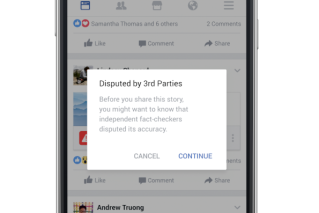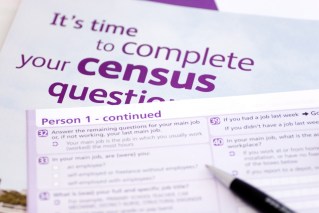Forget talk of a cashless society – we could soon be cardless as well.
Commonwealth Bank and Westpac customers will soon be able to withdraw money from ATMs using a smartphone app, according to recent announcements.
On the CommBank app, you will need to enter an 8-digit code sent via a text message, plus a four-digit PIN provided by the app itself. Westpac is yet to release the exact details of its app.
It’s something of an arms race. Once one or two banks do it, then the others basically have to catch up.
The banks are starting small. CommBank customers will only be able to make one withdrawal per day of up to $200, whereas Westpac customers will have a daily limit of $1,000 up to a weekly maximum of $2,000.
Dr Peter Dell, head of Curtin University’s School of Information Systems, says that others will follow if the idea catches on.
“It’s something of an arms race,” he says. “Once one or two banks do it, then the others basically have to catch up.”
The idea will definitely appeal to younger customers, those Dr Dell describes as “digital natives”.
“One can imagine a 21-year-old going out clubbing, taking their phone and not having to take anything else,” he says. “They’ll still be able to get cash and so on while they’re out, just with their phone.”
Is this where the payments industry is headed? And what other innovations can we expect?
 Mobile is the future, for now
Mobile is the future, for now
The industry is definitely headed in the direction of the smartphone, Dr Dell says.
“Mobile banking is still early, so we’ll see a lot more mobile things,” he confirms.
In Japan, consumers have been able to use their smartphones as a payment method for quite some time, thanks to chips in their phones similar to what is in a PayWave debit or credit card, Dr Dells says.
Most Australian phones don’t yet have these PayWave chips, so companies like Coles and the Commonwealth Bank are offering ‘pay tags’. These are stickers embedded with a similar microchip to what is in your debit or credit card, which you affix to the back of your smartphone.
The risks of convergence
Robert Liong, partner at global management consultancy firm Infosys Lodestone, has over 20 years of experience in e-commerce payment solutions, including with internet banking, mobile payments and ATMs, and has held executive roles at Westpac and ING Group.
He agrees that smartphones are definitely “part of” the future, but wisely points out that all our nest eggs cannot be put in the same basket – or the same phone.
If your phone, which now doubles as your wallet, is lost or stolen, then you will be in serious trouble.
“Normally we would call the bank to cancel our credit card, but it is also in the phone that we have just lost,” he says, describing the worst case scenario.
“The general principle of spreading risk applies here. Given payments will always attract a high amount of criminal threat, security is the key.”
 Where is the really cool stuff?
Where is the really cool stuff?
Sadly, for those fans of science fiction, the world of voice recognition, fingerprinting, retina scans and implanted microchips seems a long way off.
If you’re hankering to pay for coffee with a wink, a wave of your hand or a cool tattoo impregnated with nanobots, you’re out of luck, at least for now.
But Mr Liong does foresee this technology becoming a reality at some stage.
“There will be greater use of biometric based technology to ensure security with convenience,” he predicts. “Why use and carry all of these codes and PIN generation devices when there is nothing more unique than nature itself?”
According to fraud prevention innovator Tony Smales, CEO and founder of Forticom Group, the challenge is not the cool technologies themselves, but the difficulty of rolling them out across society.
“You have to take into account that every juncture, every merchant device, needs to be upgraded to be compatible with your new innovation,” says Mr Smales, whose company specialises in making current payment gateways more secure.
Big data is already here
Jonas Larsson, CEO and founder of Touch Payments, says his company can give us a glimpse of the future of payments.
At its core, Touch Payments allows you to try-before-you-buy when shopping online. That idea is nothing new, but how the company goes about protecting itself – and you – is truly astounding.
To be sure of your identity, and your ability to pay for the product if you decide to keep it, Touch Payments uses a highly sophisticated computer code to essentially run a credit check on you the moment you apply.
So finely tuned is this constantly evolving algorithm that it can even guess if you’ve had a few too many whiskeys on a Saturday evening, and block you from making a stupid purchase based on your erratic mouse movements.
Mobile banking is still early, so we’ll see a lot more mobile things
According to Mr Larrson, this algorithm is the first of its kind in Australia, and one of very few similar pieces of code internationally. You might have heard of the term ‘big data’. This is it, and it’s here to stay.
“Consumers have more power than ever. They also have less time than ever,” he says. “We must cater to the consumers demands and we have to do this in real-time. No one wants to wait for a decision. We want decisions to be instant. These algorithms will help us to do this.”
Forget smartphones. Perhaps computer programs will one day anticipate your every want, and even calculate what you truly need. Purchases could be quick, seamless, maybe even automatic, requiring hardly a conscious thought.








